The last time the Rams appeared in the NFC playoffs, they lost by 30 points to the Atlanta Falcons.
Seems poetic then that the Rams, in their first playoff appearance in 13 years, will host Atlanta on Saturday.

Little about the 2016 team pointed to a playoff appearance this season. Back in Los Angeles for the first time in 23 years, the Rams finished 4-12, ranked dead last in points scored and 23rd in points allowed.
Coach Jeff Fisher was fired after 13 games, and taking quarterback Jared Goff with the No. 1 pick in the draft looked, to many, to be a mistake.
Cue a Hollywood-style makeover.

The Rams hired a new coach in Sean McVay, added new players along the offensive line and in the receiving corps, and Goff had a standout season. The team won the NFC West with an 11-5 record and earned the No. 3 seed in the playoffs.
So how did this happen? The offense got better. A lot better.
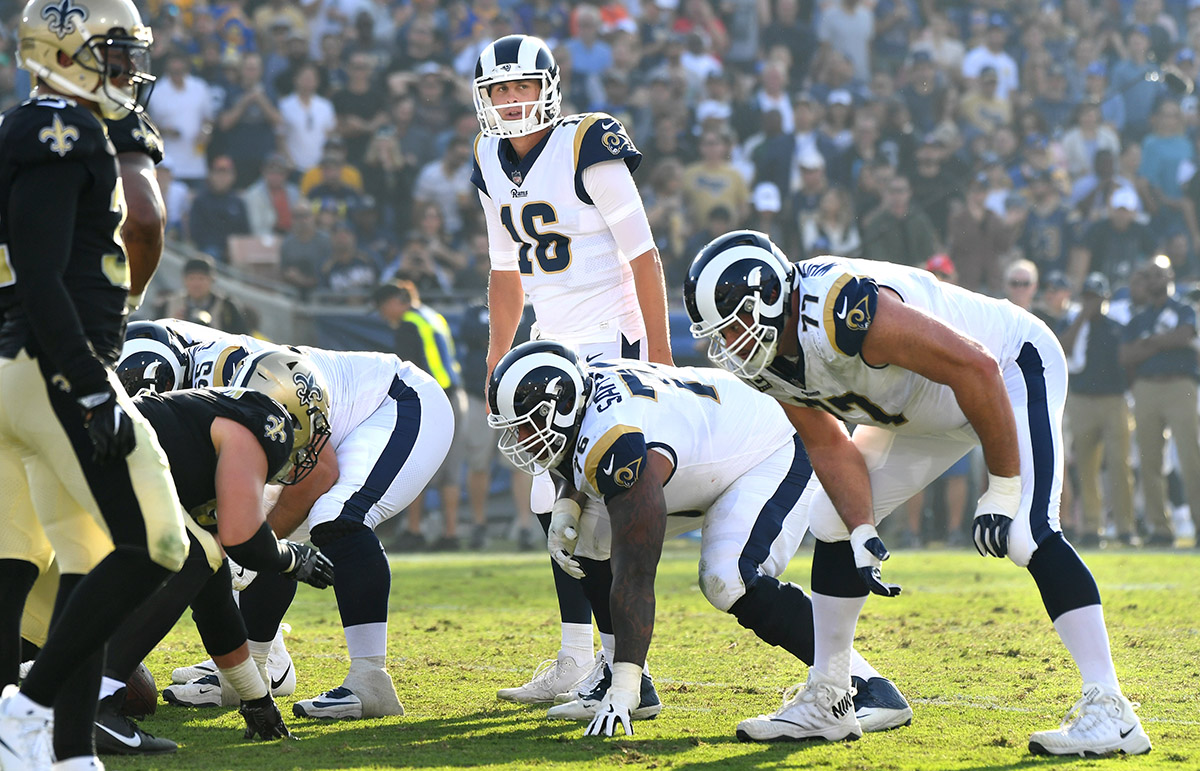
Offensive line gets an overhaul
It's probably not an overstatement to say the offensive line had the largest contribution to the Rams' turnaround.
The Rams allowed 49 sacks in 2016. Only the Cleveland Browns allowed more.
The line ranked 29th in both rushing and pass protection, according to Football Outsiders.
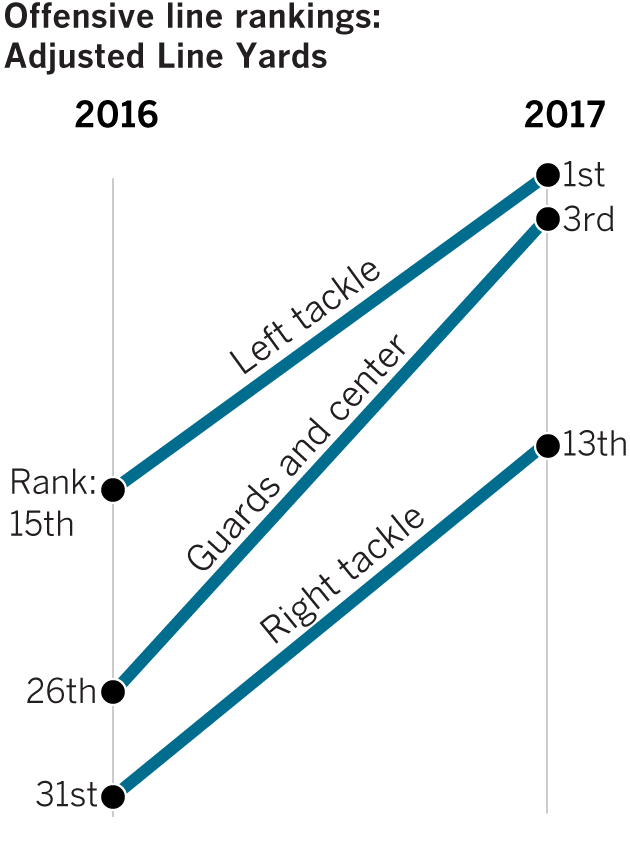
Free agent acquisitions Andrew Whitworth at left tackle and John Sullivan at center shored up the porous offensive line. Goff was sacked only 25 times, and only eight teams allowed fewer sacks in 2017.
The line finished the regular season third in the NFL in adjusted line yards, a rushing statistic Football Outsiders uses to measure the effectiveness of the five men up front. The line ranked ninth in pass protection, according to Football Outsiders.
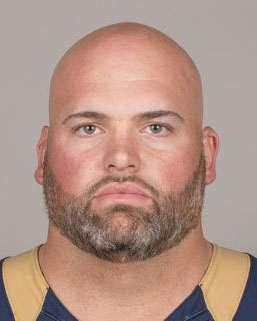
Whitworth had the most dramatic influence. He established himself as the league’s highest rated left tackle in his first year with the Rams. His adjusted line yards figure of just over six yards was more than two yards better than the NFL average.
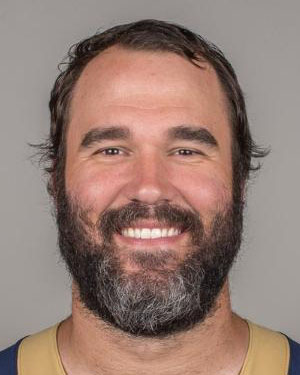
The addition of Sullivan at center gave McVay a familiar face at a critical position — Sullivan played forthe Washington Redskins when McVay was an assistant. He helped push the ranking of guard/center trios to third in the NFL, combined with improved play from Rodger Saffold and the promotion of 2015 draftee Jamon Brown.
"It takes a lot off my shoulders for sure," Goff said about Sullivan, "with his ability to understand defenses and make a lot of calls up front.
"If I see something, and overrule, I can," Goff said, adding, "99% of the time he’s right."
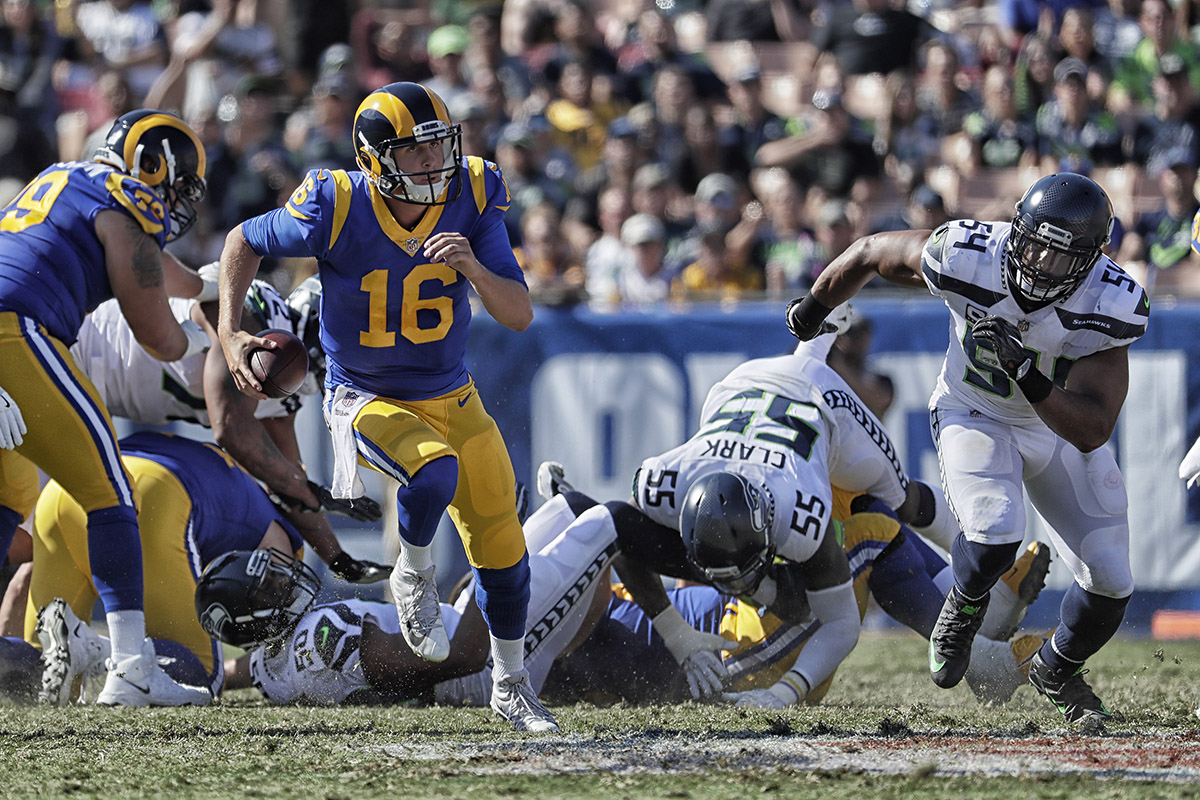
Goff finds his footing
Quarterbacks drive success in the NFL, and in his second year as the Rams starting quarterback, Goff's play drove the Rams all the way to the playoffs.
The upgrades along the offensive line helped. But from the moment the offense took the field for each new possession, to when the Cal grad delivered the ball, Goff found himself in a position to succeed.

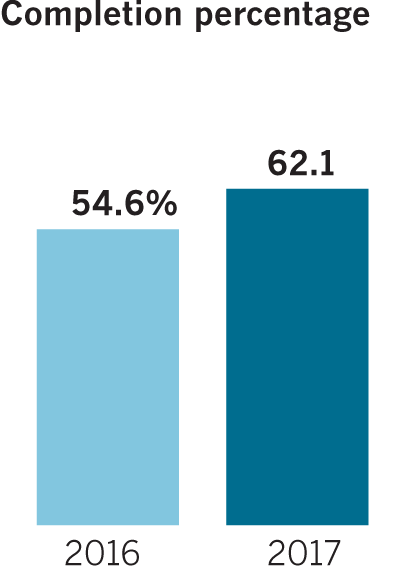

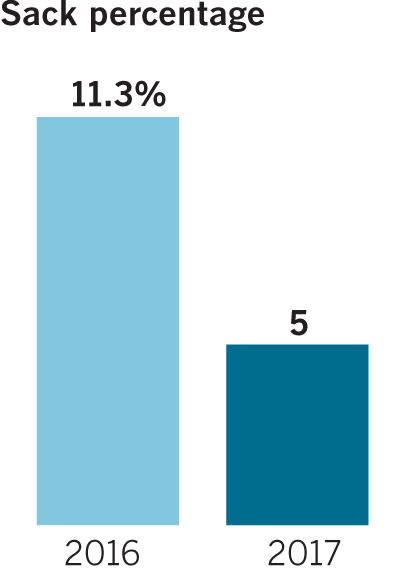

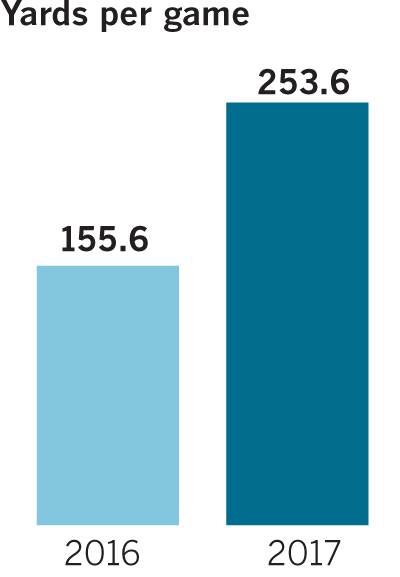
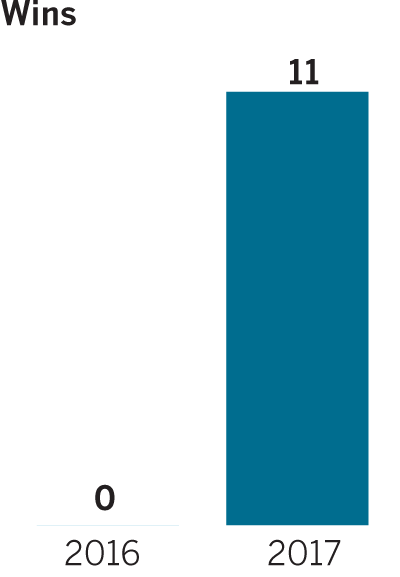
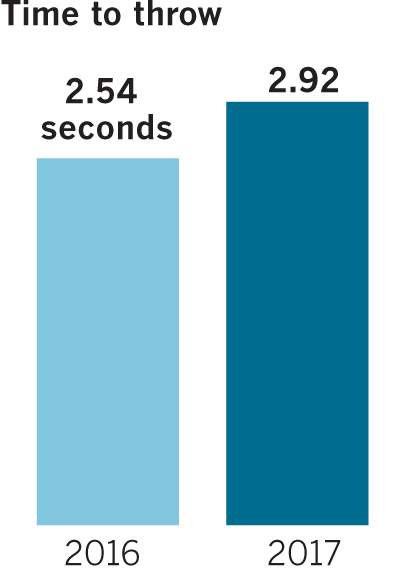
McVay told The Times he brought along some lessons he learned while working with Redskins quarterbacks Kirk Cousins and Colt McCoy.
NFL rules allow McVay to talk to Goff between plays until 15 seconds remain on the play clock. McVay took advantage of this rule, and ensured he had as much time as possible to communicate to Goff what the defense is doing.
A second-and-goal play against the New Orleans Saints highlighted this. The offense lined up in a shotgun formation and McVay offered suggestions through the headset to help Goff read the defense.
Goff took the snap, dropped back and quickly surveyed the coverage. On his third read, Goff found receiver Josh Reynolds for a touchdown.
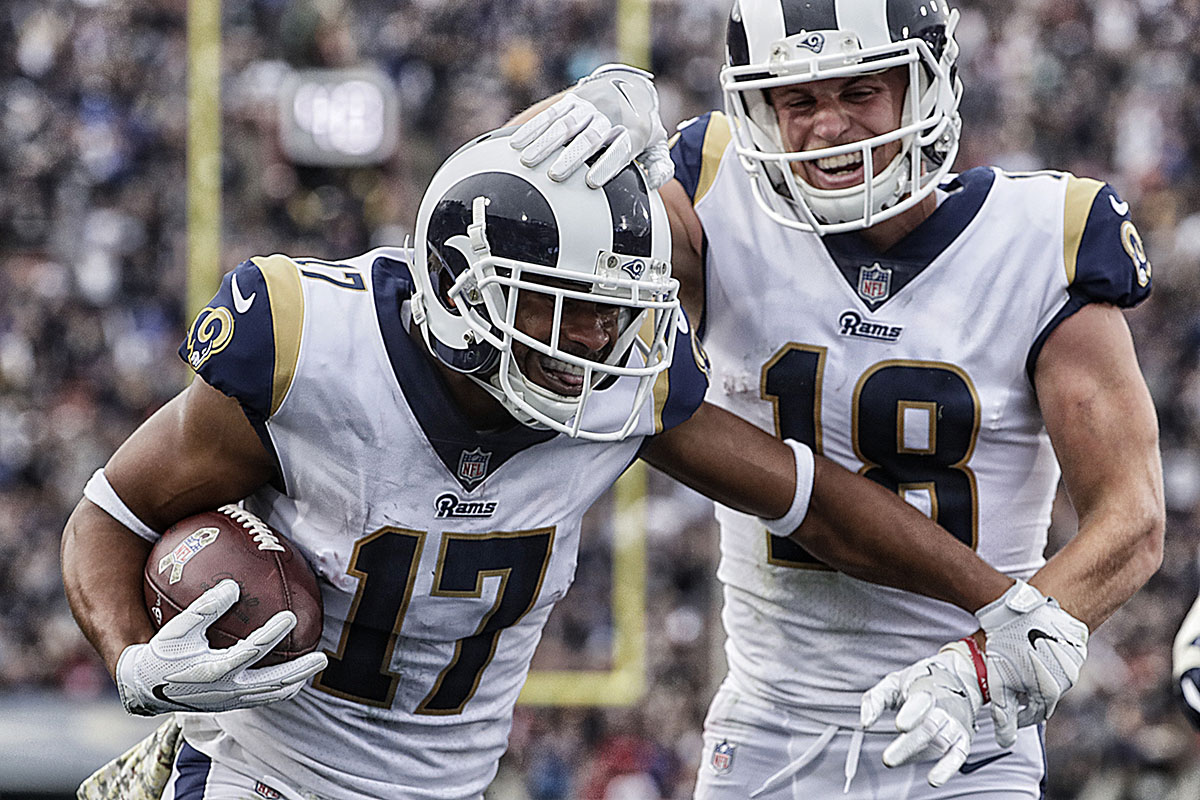
Catching on in L.A.
Robert Woods, Sammy Watkins and Cooper Kupp had more yards and touchdowns with fewer receptions than the 2016 trio of Kenny Britt, Tavon Austin and Brian Quick.
The Rams receivers decreased their dropped passes by 36% and increased their yards after the catch.
Watkins and Woods played in Buffalo last season, but found a home in the Rams starting lineup. Watkins caught just 39 passes in 2017, but 84.6% of those were good for first downs. He also led all Rams receivers with eight touchdowns.
Woods, a Southern California native, posted career highs in yards and tied a career-high with five touchdowns, including this 94-yarder against Houston.
Running back Todd Gurley II and rookie Cooper Kupp emerged as forces in the passing game, leading the team in receptions and receiving yards, respectively.

Kupp, an All-American at Eastern Washington University, finished second among rookies with 869 yards and fourth with 62 receptions and five touchdowns. His 12 receptions of more than 20 yards tied him for first among rookies.
Gurley set career-highs for targets, receptions and yards receiving. Half of his receptions went for first downs and six of them when for touchdowns.
Meanwhile, Austin's role as a receiver drastically diminished. He had the lowest production of his five-year career with 13 catches for 47 yards.
But his transition to a motion man to help open running lanes for Gurley paid dividends. Austin carried the ball 59 times for 270 yards and a touchdown.
2016 receiving leaders
| Name | Position | Yards | Touchdowns |
|---|---|---|---|
| NameKenny Britt | PositionWR | Yards1,002 | touchdowns5 |
| NameTavon Austin | PositionWR | Yards509 | touchdowns3 |
| NameLance Kendricks | PositionTE | Yards499 | touchdowns2 |
| NameTodd Gurley | PositionRB | Yards327 | touchdowns0 |
| NameBrian Quick | PositionWR | Yards564 | touchdowns3 |
2017 receiving leaders
| Name | Position | Yards | Touchdowns |
|---|---|---|---|
| nameCooper Kupp (rookie) | positionWR | yards869 | touchdowns5 |
| nameTodd Gurley | positionRB | yards788 | touchdowns6 |
| nameRobert Woods | positionWR | yards781 | touchdowns5 |
| nameSammy Watkins | positionWR | yards593 | touchdowns8 |
| nameTyler Higbee | positionTE | yards295 | touchdowns1 |
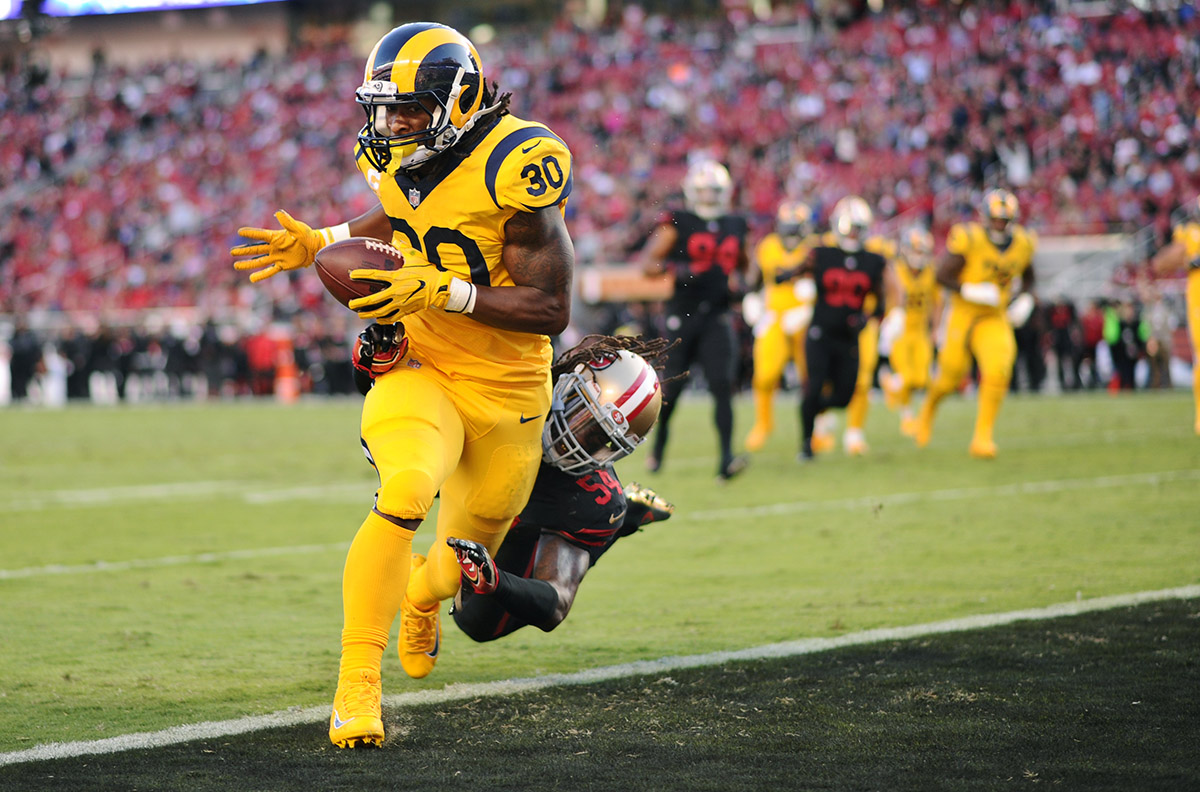
Gurley roars back
After a stellar rookie campaign that ended with the offensive rookie of the year award, Gurley all but disappeared in 2016.
Gurley's workload remained about the same over a full 16-game season. However he failed to gain more than 100 yards in any game, and his per-game average dropped by about 35%. He averaged just 55.31 yards per game.
Enter McVay.
Gurley was the class of NFL running backs for most of 2017. He finished second in the league with 1,305 yards rushing despite sitting out Week 17. Gurley led the NFL in rushing touchdowns, and his 19 combined touchdowns also led the league.
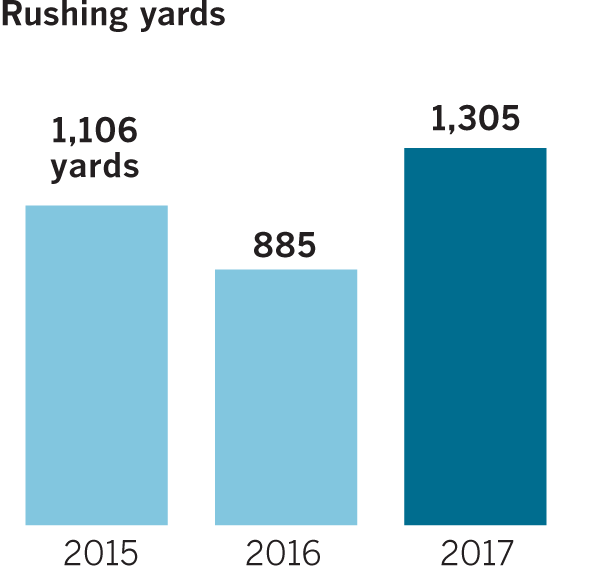
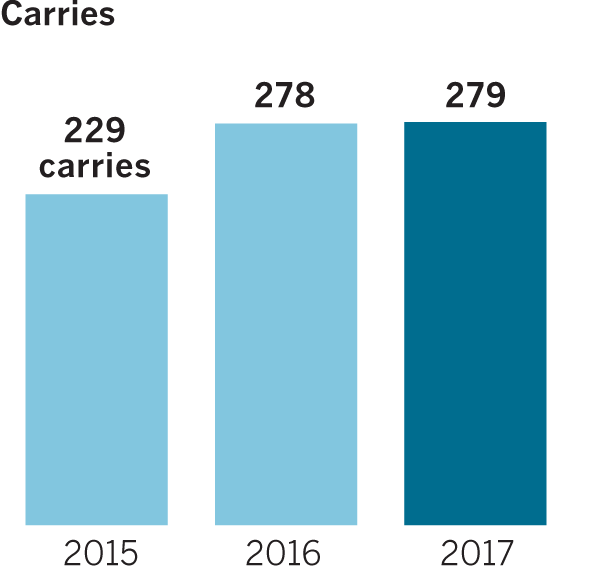
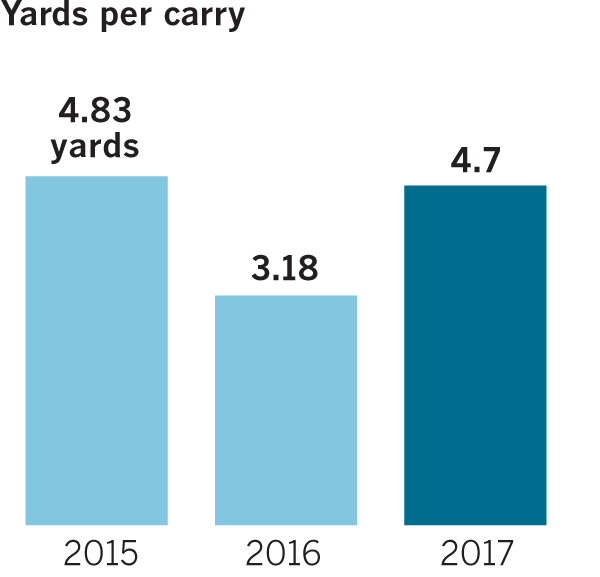
Gurley benfitted from the success the Rams had passing the football. He faced at least eight defenders in the box just 16.85% of the time, third-lowest among running backs. In 2016 Gurley faced eight defenders in the box 25% of the time.
Not only have the Rams not trailed as often as they did in 2016, but McVay has doubled down on the getting Gurley the ball where he can be successful behind Whitworth, Saffold and Sullivan on the left side of the offensive line.
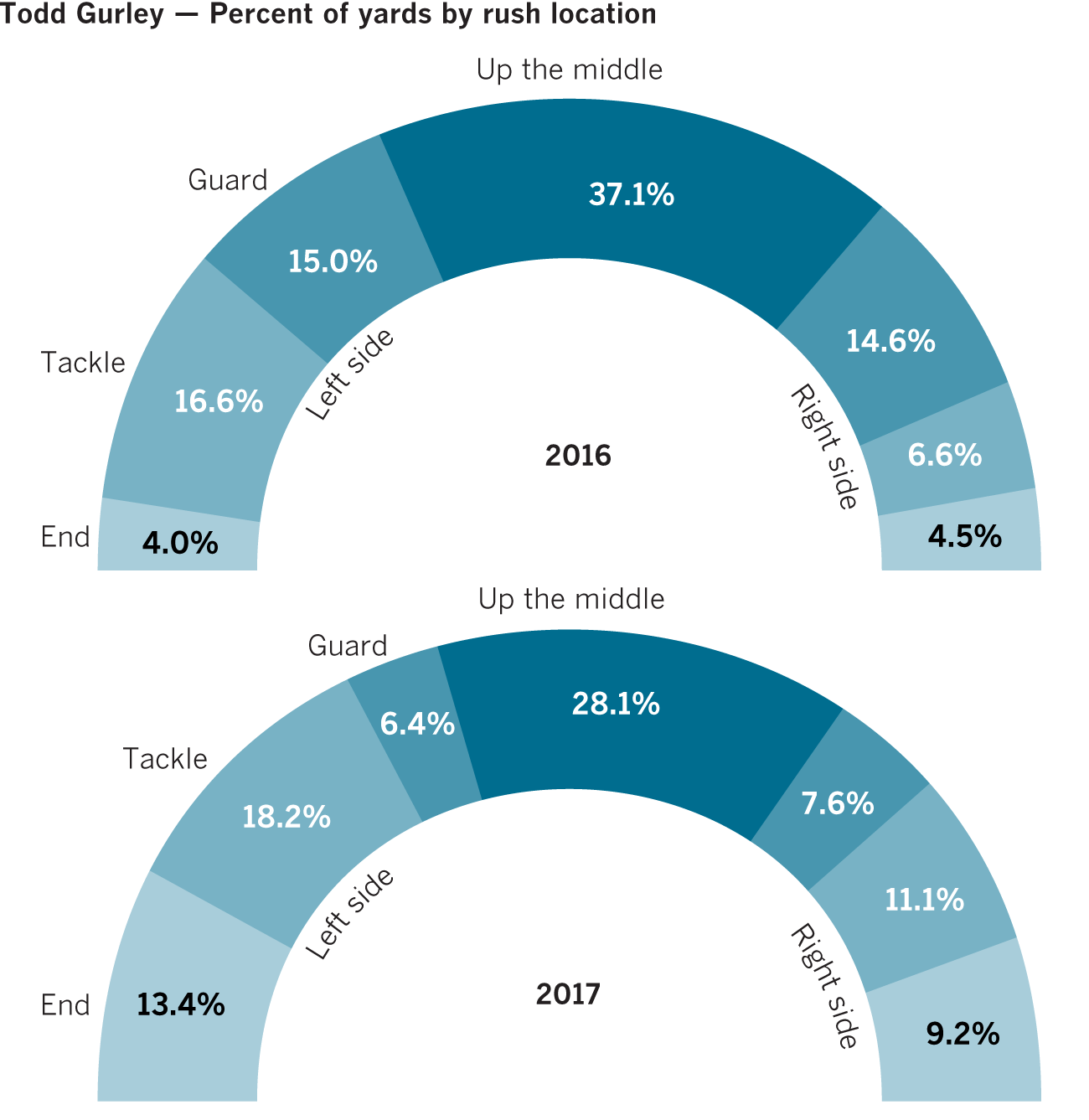
Lindsey Thiry and Gary Klein contributed to this story.
Player photos from NFL.com
